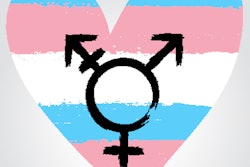
Discussing lesbian, gay, bisexual, and transgender (LGBT) issues with dental students prepares them to deal better with sexual minorities as patients or employees, while providing care as dental professionals that is sensitive to diversity, according to a study in the Journal of Dental Education (JDE, October 2011, Vol. 75:10, pp. 1354-1361).
Despite calls to include cultural diversity in the education of dental professionals to foster inclusion and respect, teaching students about sexual minorities has gotten short shrift in dental curricula worldwide, according to lead author Mario Brondani, DDS, PhD, an assistant professor at the University of British Columbia (UBC).
Typically, only schools that train medical doctors, nurses, and social workers include classes covering LGBT issues, mostly involving discussions of sexually transmitted infections and HIV. Merging the topics might cause students to wrongly link LGBT issues with sexual risk behavior, instead of realizing that such behavior risks infection regardless of sexual orientation, the study authors noted.
“We assume things all the time by the way people dress, look, behave, talk.”
— Mario Brondani, DDS, PhD, University
of British Columbia
A recent study in the Journal of the American Medical Association found that when researchers queried medical school deans in the U.S. and Canada about the curriculum devoted to topics such as gender identity, coming out as gay, and disparities in healthcare access for LGBT patients, a majority of the schools revealed they devoted only five hours to basic issues such as having students ask patients about the gender of their sexual partners, and one-third of schools allotted no time at all (JAMA, September 7, 2011, Vol. 306:9, pp. 971-977).
At UBC, six hours of class time is devoted to seminars and discussions about sexuality, almost double the average time in most medical and dental schools, according to Dr. Brondani.
Role-playing
For the JDE study, the authors used UBC's approach to teach about sexuality and LGBT issues, which includes a four-year professionalism and community service (PACS) module. The concept features role-playing, with people posing as standard patients, and discussion of sexual medicine and aspects of aging and diversity.
One of the most interesting ethical dilemmas involves a "hot seat" scenario, in which someone plays a transgender male-to-female character named Pauline who is being interviewed for a staff position by a dentist (played by a student). Students must consider not only consider Pauline's experience and skills but her looks.
Following the role-playing, the students discussed the situation and how they would have acted. They then wrote about the experience, including how they felt and what they learned.
The students showed mixed reactions about whether to hire Pauline and the potential embarrassment for patients, given that the office is supposedly located in a small town away from metropolitan areas, the study authors noted.
Students also had to give Pauline a reasonable rationale about whether she will be hired or not. One male student said it was not an ethical dilemma because she had the credentials to do well in the position. But a female student, who noted that she had gay friends, acknowledged feeling uncomfortable.
"I felt a bit awkward with Pauline," she said. The student also had a hard time imagining a transgender working as a receptionist in her own father's practice, saying, "It would probably be complicated for her [Pauline] and the patients."
However, the experience made the student realize that she may someday be faced with a similar situation.
"For these students, and probably for many others, a thorough discussion of sexuality would complement this experience by providing more information and tools to better prepare future health professionals on how to handle situations like this and decrease potential embarrassment," the authors wrote.
A safe environment
Another session challenged students about their attitudes and beliefs about sexuality by asking them to write down what they would really like to know about LBGT people that they were too embarrassed to ask. In their questions, they wondered if LBGT people belonged to religions that forbid being gay and how they responded to queries on medical forms asking if they were male or female.
One first-year female student wrote: "The whole issue of sexuality is still something that gets me a bit uneasy." But she conceded that the exercise made her think about such issues.
One male student was fascinated by a guest speaker who described his transformation from male to female and the continuing love of her wife. He also appreciated hearing his professors talk about their personal stories.
"Very captivating and engaging, entertaining, and enlightening," he concluded.
A female student said she could relate to a female-to-male guest speaker who said he never liked to look in the mirror. "I still have a long way to go before I can accept all of this as the norm," the student admitted, adding, "but people always say that time heals all."
These types of sessions offer a safe environment for students to discuss their attitudes about sexual diversity, especially since it includes the participation of LGBT faculty who will be interacting with students in other classes, the researchers noted.
"It gave more credit to the whole discussion when I saw our professors who put their faces out there and shared their stories with us," one male student said, "which only increased my respect and admiration for them to hear what they have experienced."
Working with older patients
A session concerning the diversity of older populations can help prepare students for their rotations at long-term care facilities. In it, students are shown illustrations of same-sex couples who are older than 65 from various ethnocultural backgrounds.
The goal is to show that sexual protection is key at any age, that older adults are as prone to sexually transmitted infections as younger people, and that they should be encouraged to discuss this with their healthcare providers, the study authors noted.
One student observed that it could be challenging for older gay people to express their sexuality because they might feel ostracized if they depend on care aides who might not be open to sexual diversity.
Another student admitted: "Older adults having sex and same-sex couples? The issue is still a challenge for me maybe because I never saw myself having this conversation with my grandma."
There is a need to include both faculty and staff in the teaching of LGBT issues in dental education, and to encourage further dialogue for better understanding of the implications of such education in both academic and professional settings, the study authors concluded.
"Most of us work with 'assumptions': We assume things all the time by the way people dress, look, behave, talk, etc. Maybe it is time to rethink our assumptions, be less (or non) judgmental and respect differences," Dr. Brondani wrote in an email to DrBicuspid.com. "I believe that by exposing students to issues such as this, we can wipe out homophobia."



















